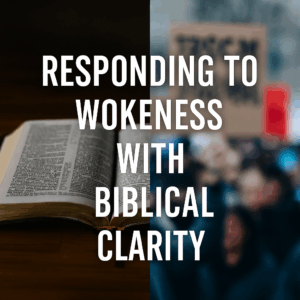⏱️ Estimated Reading Time: 4 min read
Over 40 years ago, a classic was born. The great Mortimer Adler and Charles Van Doren released a book that would become the go-to source for learning how to read books. Since its inception, How to Read a Book has been pretty well the only source for a deep look into the art of intelligent reading. But more voices are needed, specifically, when it comes to Christian reading. Lit! has come to be that voice. Tony Reinke’s book on reading is a new go-to when it comes to learning the art of Christian reading. Non-readers and avid readers alike will benefit from what Lit! has to offer.
How Lit! Will Help Your Prayer Life
Tony Reinke’s book on reading is a new go-to when it comes to learning the art of Christian reading. The first is theological, the second is practical. Reinke first desires to give us a theological foundation for reading in general. This is not a book about reading Christian books, so much as it is about Christians reading books. Whether is Plato, Poe, or Piper, Reinke knows it takes a solid theological foundation not only to see the point of books but to feel the holistic benefits of books read.
Reinke starts off by reminding us of the exclusivity of the Bible, that every other book is “imperfect, deficient, and temporary” (26). Once this precedence is set, Reinke shows, theologically, how literacy helps us in the fight against sin (Chapter 2), how language conveys meaning better than images (Chapter 3), how our worldview should shape our reading, especially of non-Christian books (Chapter 4-5), and how reading sparks imagination (Chapter 6). Of all these chapters, I found Chapter 3 to be the most compelling and necessary, at least for my generation, to benefit from. Reinke is a strong voice advocating for less screen-time and digital detoxes. This is reflected deeply in this magnificent chapter.
How We Should Read
After laying this underpinning, Reinke turns to give us the nuts and bolts of how we should be reading. While I don’t think this section is as necessarily important as the first, to me this portion of the book was full of new insights and fresh information, and I benefitted much from it. This section of the book is chock full of tips, tricks, suggestions, lists, and bullet points that Reinke gives us the freedom to tinker and toy with when it comes to our own reading. I made many marks highlighting key points from this section of the book. I’ll share a few ideas that stuck with me.
The first is the element of choice in reading. Reinke correctly reminds us, “For every one book that you choose to read, you must ignore ten thousand other books…Book reading will make you acutely aware of your personal limitations” (94). This significance of choice illustrates the need to not only do the work of reading but to do the work of preparing for reading.
The second is one tip Reinke offers in Chapter 8, that we should “develop a reading strategy.” Some books, he suggests, are meant to be chewed and digested like steaks. Others should be swallowed like a milkshake. Still, others should be sampled like a cheese platter (113). This helps the reader, as he does the work of carefully choosing books, to also know to what end and for what purpose he is reading the book at all. No one (not me at least) can take on six hearty “steak” books at once. We must find our pace, and we can do that when we start determining which books need to be read cover to cover and which need to be scanned.
Finally, in Chapter 12, I particularly enjoyed Tony’s insights into how he annotates books. I am a note-taker and margin-liner myself, so I was encouraged to see such importance placed on this practice in reading. Reinke addresses reasons why he marks in his books, but also offers helpful pointers for how he goes about doing it. As one develops as a reader, they will discover their style, but for now, this chapter can be of great value to making books stick and become conversant with our minds and hearts.
Final Thoughts
Readers and non-readers alike will benefit from Lit!, but I want to offer a special commendation to pastors and church leaders here. Every leader must be a reader; those who find reading difficult will cite a variety of reasons for why it’s challenging. However, as Lit! demonstrates, not only is the why? of reading enough proof for its importance, but the how? is easier than we might think. I’m grateful for this short little manual on how we can grow in our reading abilities and thankful for Tony’s commitment to creating a Word-thirsty culture in our churches.



